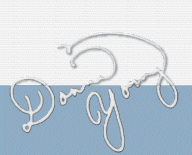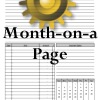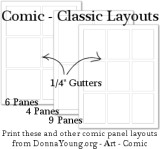Donna Young's Comments
 Learning Curve
Learning Curve
I'm not sure how common this is for homeschoolers, but Exploring Creation with General Science can present students with a learning curve in scientific reasoning, study skills, and how to make a lab report. The first module seems to be the hardest because it throws all of that in, and in quantity. Read more about module one below. I encourage you to do the course as prescribed by Dr. Wile. Your children can get a lot out of this course that will help them in the coming years.
On This Page
A Look at Module One
The first module seems difficult. Module one has history, a lot of scientists, and four experiments. The student is not only learning how to conduct experiments and how to write a lab write-up, the student is learning names of scientists and what they did - and they will be tested on 16 of the scientists. It is a tough first module!
Module One: Spreading out the Work
Module one schedules from Lesson Plan #1 and Lesson Plan #2 are linked below for your convenience. Please note that these plans are based on Edition One.
I have two sets of lesson plans for Exploring Creation with General Science, edition1 and those plans are called Lesson Plan #1 and Lesson Plan #2. In Lesson Plan #1, I scheduled Module 1 to be completed in two weeks and I think that is a tight schedule. I have posted a suggested revision below.
Possible revision - Module One in 14 days with the Experiments in Bold
Day 1: Introduce book, Read Student Notes, Read Page 1 up to Page 4, Stop at "True Science Begins to Emerge".
Day 2: Page 4, Read "True Science Begins to Emerge" through first experiment, Do Experiment 1.1
Day 3: Continue reading and through experiment 1.2, do Experiment. 1.2, finish reading section and do OYO
Day 4: Page 8, Read "Three Other Notable Greek Scientists"
Day 5: Page 12, Read "The Progress of Science Stalls For a While" and Page 12, do Experiment. 1.3: A Chemical Reaction
Day 6: Page 16, Read "Science Begins To Pick Up Some Speed Again"
Day 7: Page 19, Read "The Renaissance: The "Golden Age" of Science" and do Experiment 1.4: Mapping the Paths of the Planets
Day 8: Page 23, Read "The Era of Newton"
Day 9: Page 25, Read "The "Enlightenment" and the Industrial Revolution"
Day 10: Page 27, Read "The Rest of the Nineteenth Century"
Day 11: Page 29, Read "Modern Science (1900 A.D. - Present)" and Page 31, Read Summing it Up
Day 12: Study
Day 13: Study
Day 14: Test
In Lesson Plan #2, Module 1 is spread over 15 days. If you want to see the differences between the 3 sets of lesson plans for Module 1, open the files for ![]() Lesson Plan #1 and
Lesson Plan #1 and ![]() Lesson Plan #2 while viewing the revision listed above. The links are set to open in a new window (or tab based on your browser settings.)
Lesson Plan #2 while viewing the revision listed above. The links are set to open in a new window (or tab based on your browser settings.)
Taking Two Years
By itself, Exploring Creation with General Science is not a two-year course. It is possible to spread it out over two additional months, but another whole year is spreading it thin. If you are planning to use this book for your child's 6th and 7th grade years, please do any one or more of the following ....
- investigate some of the topics to a greater depth
- add on additional curriculum for part of the year
- start the book in the last quarter of the 6th grade year and finish it in the 7th grade year
My Red Cabbage Tip
Modules 1, 12, 13, call for red cabbage. If you have a child using physical science or biology, red cabbage is used for those too. The following is my tip.
Buy the smallest head of red cabbage that you can find. When you get it home do one of these things with the cabbage.
Frozen Red Cabbage
- Cut it into narrow strips
- Put it in a BIG freezer bag, spread it out in the bag
- Keep it in the freezer
- When you need some red cabbage, break off a small handful and put the rest back into the freezer.
Or Make Red Cabbage Juice
- Shred the cabbage or cut into narrow strips
- Place the cabbage in a saucepan
- Add enough water to float the cabbage
- Boil the cabbage until the water is very colored
- Remove the cabbage
- Cool the water
- Pour into ice cube trays
- Freeze solid and dump the cubes into a freezer bag
- Store in the freezer and take out cubes as needed for experiments
![]() Note: Making and freezing the cabbage juice ahead of time takes away from the child the experience of preparing the cabbage and boiling it.
Note: Making and freezing the cabbage juice ahead of time takes away from the child the experience of preparing the cabbage and boiling it. ![]()
Lab Book Drawings
When I came across a diagram that I thought was important to the topic of the Module, I would have my children draw the diagram in their lab book. In the lesson plans that I posted online, I did not always assign the drawings, but if there is a drawing that you feel would be educational for your child, then assign the drawing. Below are links to a couple of my children's drawings. They are not the best examples, they are just a couple that I chose randomly from their books.
Lab Book Drawing Examples 01 | 02 |
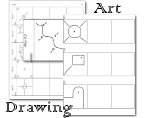 If your children are having trouble drawing diagrams for their lab books, then consider assigning drawing lessons from this page - Drawing Practice
Printables: Drawing Ia | Read more about these drawing lessons at : The Purpose of Drawing 1a and directly under that "How to Evaluate the Student's Work".
See also the Samples of Evaluated Work.
If your children are having trouble drawing diagrams for their lab books, then consider assigning drawing lessons from this page - Drawing Practice
Printables: Drawing Ia | Read more about these drawing lessons at : The Purpose of Drawing 1a and directly under that "How to Evaluate the Student's Work".
See also the Samples of Evaluated Work.

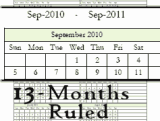
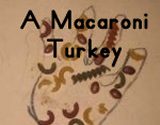 Macaroni Turkey
Macaroni Turkey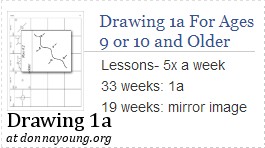
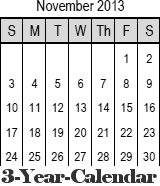 3-Year Calendar
3-Year Calendar